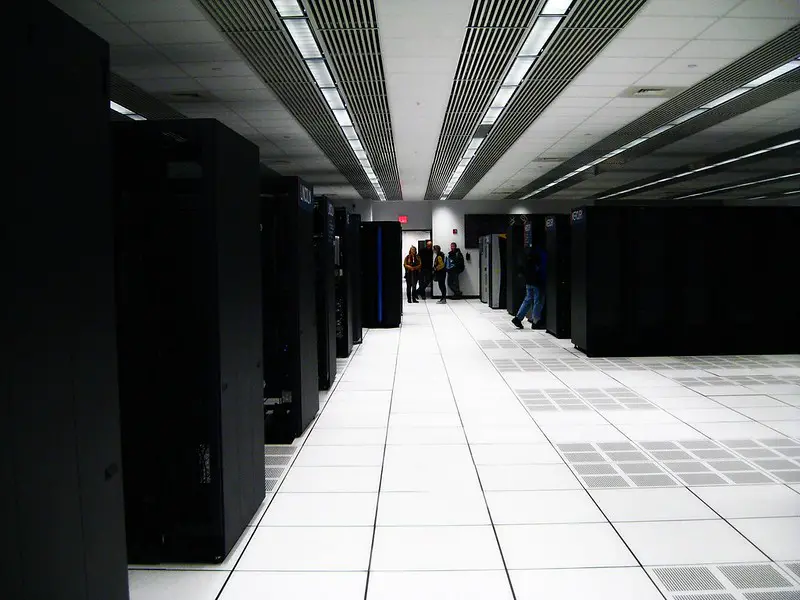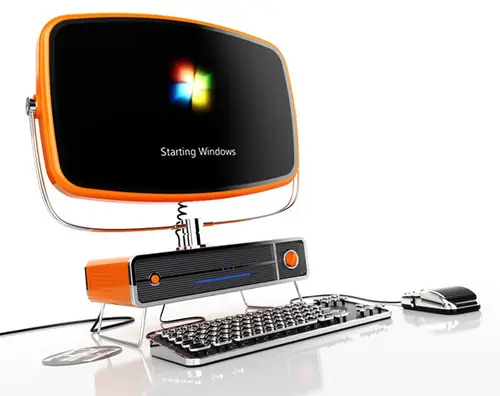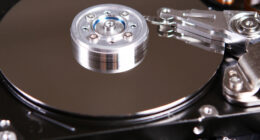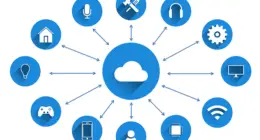A microcomputer is a small, low-cost computer designed for personal or home use, while a supercomputer is a large, expensive computer designed for highly complex scientific and engineering calculations. Microcomputers have limited processing power and memory compared to supercomputers, which are designed for high-performance computing tasks that require massive amounts of processing power and memory.
What is a microcomputer?
(Photo by Lorenzo Herrera on Unsplash )

A microcomputer is a type of computer that is designed for personal or home use. It is typically smaller in size, lower in cost, and less powerful compared to larger computers used in businesses or research institutions. Microcomputers were first introduced in the late 1970s and early 1980s and have since evolved to include a wide range of devices, including desktops, laptops, tablets, and smartphones.
Microcomputers are designed to be user-friendly and are typically used for a variety of tasks, such as office work, web browsing, gaming, and multimedia creation. They typically have limited processing power and memory compared to larger computers, but are still capable of running a wide range of software applications.
One of the key advantages of microcomputers is their portability, which allows users to take their computer with them and work or play from almost anywhere. Microcomputers have become an integral part of our daily lives and have revolutionized the way we communicate, work, and entertain ourselves.
What is a supercomputer?
(Photo By kosheahan on Flickr)

A supercomputer is a type of computer designed for highly complex scientific and engineering calculations that require massive amounts of processing power and memory. Supercomputers are some of the most powerful computers in the world and are used in a variety of scientific and engineering fields, including climate modeling, molecular dynamics, weather forecasting, and cryptography, among many others.
Supercomputers are characterized by their high performance, typically measured in FLOPS (floating-point operations per second), and their large amounts of memory and storage. They are typically large and expensive and are housed in specialized facilities, such as research institutions and government agencies.
Supercomputers use advanced technologies, such as parallel processing and high-speed networking, to achieve their impressive performance. They are also designed to be scalable, allowing for the addition of more processing units as the need arises.
The development of supercomputers has played a crucial role in advancing scientific and engineering fields and has led to many breakthroughs and discoveries. They continue to be at the forefront of cutting-edge research and innovation, and their impact on our world is likely to continue to grow in the coming years.
Differences between microcomputer and supercomputer
Microcomputers and supercomputers are two types of computers that differ in terms of their size, cost, processing power, memory, and intended use. Here are some key differences between microcomputers and supercomputers:
- Size and cost: Microcomputers are typically smaller in size and lower in cost compared to supercomputers. Microcomputers are designed for personal or home use and can range in price from a few hundred dollars to a few thousand dollars. Supercomputers, on the other hand, are larger and more expensive, with prices ranging from several million dollars to tens of millions of dollars.
- Processing power and memory: Supercomputers have significantly more processing power and memory compared to microcomputers. Supercomputers are designed to handle complex scientific and engineering calculations that require massive amounts of processing power and memory, whereas microcomputers are designed for general-purpose computing tasks that can be accomplished with limited processing power and memory.
- Intended use: Microcomputers are designed for personal or home use and are used for tasks such as office work, web browsing, gaming, and multimedia creation. Supercomputers, on the other hand, are designed for specialized scientific and engineering calculations that require high performance.
- Parallel processing: Supercomputers use parallel processing, where multiple processing units work together to solve complex problems, to achieve their impressive performance. Microcomputers, on the other hand, typically do not have the same level of parallel processing capabilities.
- Scalability: Supercomputers are designed to be scalable, allowing for the addition of more processing units as the need arises. Microcomputers, on the other hand, are not typically designed for scalability and may need to be replaced entirely when the user requires more processing power or memory.
Microcomputers and supercomputers are two types of computers that differ in terms of their size, cost, processing power, memory, and intended use. Microcomputers are designed for personal or home use, while supercomputers are designed for specialized scientific and engineering calculations.
What is the main difference between microcomputer, minicomputer and supercomputer?
Microcomputer
A microcomputer is a small, handheld or desktop computer that typically has a processing power around one millionth that of a mainframe computer. They are commonly used in businesses, homes and schools.
What are the types of microcomputers?
-
- Desktop computer
- Laptop computer
- Notebook computer
- Netbook computer
- Tablet computer
- Ultra-mobile PC
- Handheld computer
- PDA (Personal Digital Assistant)
- Single-board computer
- Embedded computer.
Mini–computer
Mini-computers are a subclass of microcomputer that are smaller still, measuring approximately 3 inches square by 2 1/2 inches deep by 5 inches wide. They have more processing capability than typical microcomputers but are not as powerful as mainframes.
What are the types of mini computers?
- Mainframe computer
- Midrange computer (also known as a “minicomputer”)
- Superminicomputer
- Workgroup server
- Departmental server.
Supercomputer
Supercomputers are the most powerful type of computers and can handle complex tasks such as simulating the behavior of molecules or predicting weather patterns. Compared to mini-computers and mainframes, they have thousands or tens of thousands more processors and memory chips.
What are the types of supercomputers?
- Vector supercomputer
- Cluster supercomputer
- MPP (Massively Parallel Processing) supercomputer
- Cloud supercomputing
- Hybrid supercomputer
- Cognitive supercomputer.
What is mini micro mainframe and super computer?
A mini micro mainframe is a type of computer that is about the size of a personal computer. They are used for small businesses and are not as powerful as regular mainframes. A supercomputer is a much more powerful machine than a mini micro mainframe. Supercomputers can handle complex calculations and tasks much faster than mini micro mainframes.
What is supercomputer and its uses?
Supercomputers are systems that are several orders of magnitude more powerful than microcomputers. They can handle more complex tasks and calculations than most personal computers. The most common use for supercomputers is in the fields of academia, research, and engineering. Supercomputers are also used to simulate physical systems such as weather patterns or financial markets.
What is microcomputer and its uses?
A microcomputer is a small, low-power computer that typically runs on a processor designed for embedded systems or portable devices. They are commonly used in fields such as industrial control, POS terminals, point of sale systems, and other small to medium sized applications. A microcomputer is not capable of performing high-performance calculations like a supercomputer. However, microcomputers offer ease of use, faster response times and lower power consumption than supercomputers.
Supercomputers are multi-purpose computers that can perform millions of operations per second (MIPS). They are primarily used for academic research in fields such as climate change and wind turbines. Most commercial software does not require the performance of a supercomputer and therefore they are not used in those applications.
What are the characteristics of supercomputer?
Supercomputers are massively powerful machines that can calculate incredibly large numbers quickly. They’re different from microcomputers, which are slower but more common, because supercomputers have more than one processor and can handle bigger calculations. Supercomputers also tend to be much, much more expensive than microcomputers.
What are the advantages of supercomputer?
There are many advantages to using a supercomputer over a microcomputer. For one, supercomputers can handle vast amounts of data much faster than microcomputers can. They are also better able to make complex calculations quickly and accurately. Additionally, supercomputers tend to be more energy efficient than microcomputers, meaning they use less electricity and don’t require as much cooling. Finally, many commercial applications — such as climate modelling or financial analysis — can only be performed on supercomputers.
What are the main features of a microcomputer?
A microcomputer is a small, low-powered computer that is typically used for tasks that are not as demanding as those performed on a supercomputer. For example, a microcomputer might be used for calculations in financial markets or for controlling industrial machinery. A supercomputer, on the other hand, is a much more powerful machine designed to handle complex mathematical problems or to crunch large data sets.
What are the advantages of micro computer?
Microcomputer systems are defined as being 1 million or less computer instructions in length. They are also called mini computers because of their small size and relative low power requirements. These systems typically have a single processor, relatively small memory, and limited storage capacity. Microcomputers are used in a wide variety of industries including scientific research, engineering design, security monitoring, and inventory control. Their small size and relative simplicity make them ideal for tasks that do not require a high level of processing power or sophisticated storage management.
Supercomputers are defined as systems with more than one million computer instructions in length. They are much larger than microcomputers and typically have many processors working together to provide the needed processing power. Supercomputers can also be configured with large amounts of memory and storage capacity to allow them to perform complex tasks such as weather forecasting or genetic analysis. Supercomputers are used mainly by researchers and scientists who need tools that can handle complex calculations quickly.
What are the disadvantages of micro computer?
Microcomputers are cheaper and more accessible than supercomputers, which can be an important consideration if you need to use your computer for business or research but don’t have the money or resources to buy a top-of-the-line model. Additionally, microcomputers can be used in many different settings, such as homes and schools, where supercomputers typically aren’t used. However, they’re not always suitable for complex tasks or heavy workloads.
Another advantage of microcomputers is their versatility. They can be used for a wide variety of tasks, such as word processing and Internet browsing, while supercomputers are typically designed for specific applications, such as scientific calculations or weather modeling. This makes them better suited for specific purposes or industries than general-purpose machines.
However, there are also some disadvantages to owning a microcomputer. They’re not always reliable when used for heavy workloads or tasks that require more power than typical computer tasks. Additionally, they’re not always well suited for gaming or other activities that require high levels of graphics performance.
What are the advantages of mini computer?
Mini computers, also known as midrange computers, offer a range of benefits to organizations. One of the main advantages is their cost-effectiveness compared to larger mainframe computers. They provide a good balance between performance and cost, making them a popular choice for small and medium-sized businesses. Another advantage is their scalability, allowing organizations to add more hardware or software as their needs grow. Mini computers also offer a high level of flexibility, allowing for customization of hardware and software configurations. In addition, mini computers support resource sharing, enabling multiple users to access the same resources and applications simultaneously. They also have easy maintenance, reducing downtime and costs associated with repairs. Furthermore, mini computers support advanced security features to protect sensitive data and applications from unauthorized access. Finally, mini computers have excellent networking capabilities, allowing for easy integration with other devices and systems.
What is the difference between PC minicomputer and mainframe?
PCs, minicomputers, and mainframes differ in terms of processing power, cost, scalability, and the type of applications they are suited for. PCs are less powerful and less expensive, intended for individual or small-scale use. Minicomputers offer more power and capability, while mainframes are designed for large-scale, mission-critical applications and can handle heavy-duty processing and large amounts of data and users. Mainframes are also the most expensive and complex of the three.
What is the difference between micro computer and micro controller?
Micro computer and micro controller are two different types of digital devices that have smaller dimensions than traditional computers. Micro computer usually refers to a small, hand-held device or a larger peripheral in a system, while micro controller is a specialized type of controller used in embedded systems.
Micro controllers are designed with low-power consumption in mind and typically have on-board flash memory and an on-chip interconnect to facilitate fast data transfers. They are often used in industrial applications where short response times are critical, such as safety-critical control systems and smart environmental monitors. Micro controllers can also be found in consumer electronics products, such as set-top boxes, gaming consoles, drones, and automotive infotainment systems.
Micro computers operate on processor architectures that date back decades; they typically use Intel x86 processors and rely on the Windows operating system for user interface. They come equipped with hard drives for storage and may have multiple displays for displaying information to the user.








